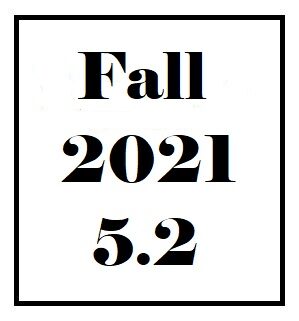Between Intervals: A Soundscape for all Us Monsters
Robert Lestón, New York City College of Technology
 |
Click to listen on Soundcloud
***All sounds in the project are opensource. |
The thinking of this project comes from two influences from the 2018 symposium on Sound, Rhetoric, and Writing that was hosted at Middle Tennessee State University. The first is a basic tenet that came from Steve Katz, one of the founding explorers of the relationship between rhetoric and music. Katz brought his audience back to question the notion of indeterminate knowledge. Katz posed the following question: How do you leave indeterminate knowledge indeterminate? How do you investigate an object without ruining the delight of that object?
For Katz, one of the difficulties is that we are always in language, and if we want to understand a thing, we may easily go too far by using words to name that thing or we may not find words that are capable of expressing that thing, or even if we can express it, it may not be communicated to another, as the meaning that accompanies words often get re-inscribed into the vocabulary of the listener. For those familiar, this is similar to the classic sophistic triple dilemma, or trilemma, as the Sophist Gorgias of Leontini expressed it just a few millennia ago in 427 BCE. The trilemma is a set of three theses that Gorgias forwarded and that served Gorgias well during his lifetime. Many sophists had reputations for being able to speak eloquently and persuasively on any topic. But Gorgias was known to be able to speak on any topic and then following his oration, turn around and speak even more persuasively on what was known as the dissoi logoi, that is, the opposite case. The first part of the trilemma is simply, Nothing exists. Those two words in that order, if you ponder them a while, might give you a headache, and I don’t want to give anyone a headache, so I’m not going to get into any of the proofs Gorgias invented for this thesis. I will say that in many ways his proofs foretell the kinds of debates between the rationalists like Leibniz and the empiricists like Hume you heard about in your undergrad philosophy classes.
Nothing exists. The second part is: Even if something exists, it can’t be known. And lastly, even if it could be known, it can’t be communicated.
It was this trilemma, I think, that Steve Katz was getting at in our symposium on Rhetoric and Sound, to remind us that language is immensely fallible, so when we try to explain indeterminate knowledge, we, somehow, make it determinate. We name it. We black-box it. We nail it down. We make meaning. We communicate. We categorize it. We turn it into something it’s not. It’s not so much a commonplace to say we’re always in language anymore, but even back in the days when we did say it, that didn’t mean all that much to a dancer, a painter, or a chef. We may be in it but we’re never limited by it. A gentler language might make us feel our thoughts differently. Or maybe we could start speaking with birdsong, crashing waves, and violins.
The second influence came from a talk given by Damon Krukowski (2018) who was working from his book The New Analogue. Krukowski’s talk, for me, resonated with a single message between the essential difference between the analogue and the digital. Isn’t it great that we don’t get the snap-crackle-pop from phonographs anymore? Isn’t it great that all of that noise is gone? Isn’t it great that after 22 minutes there’s no need to get up, walk across the room and flip the record? To borrow terms from cybernetics and electrical engineering, the digital represents pure signal with virtually no noise.
Take, for example, the difference between an analogue clock and a digital one. The digital tells you exactly what time it is, but the analogue clock tells you all the times that it is not and asks that you locate the time it is in relation to all these other times. From the viewpoint of the digital designer, the analogue communicates information that is not desired, so that information is trimmed away as noise. Noise, then, is information that is being communicated that is unwanted. Krukowski expanded this basic concept to other comparisons between the analogue and the digital. In Google Maps or Waze, you do not have find your location, as the program does this for you. The digital eliminates the whole of the map and locates you into its center. You do not move through the terrain, but rather the map moves as you move. From this perspective, you have not traveled, even if you’ve gone from one continent to another. You are always in the center. Analogue technologies, whether they are maps, clocks, or phonographs provide you with a spectrum of noise and leave it up to you to locate the signal or the meaning.
When we are purely in the digital, what has been cut out from experience is significant. In 1969, a DJ named Russ Gibb in Dearborn, Michigan got a phone call from a student at Eastern Michigan University who asked if Paul McCartney had died. The student explained that when you played “Revolution 9” from the Beatles White Album backwards, you’d get the message that Paul was dead. After getting the call, Gibb played the track backwards for the audience (McCollum, 2019). If you’ve heard this track, you’ll know that it’s pretty weird playing it forward to begin with. The track was inspired by the technique known as musique concrète, an avant-garde style of sound collage that has many diverse definitions, but that in the hands of the Beatles was really a celebration of noise. The DJ played the album backwards for his radio audience, stirring up the rumors of Paul’s death ever further. I searched and searched my Spotify interface, and for the life of me, can’t find the “play in reverse” feature. Luckily, I do have a turntable and The White Album. I’ll let you try it out for yourself.
In both Katz’s and Krukowski’s talks, I heard them both say, “you have to look to the noise.” It’s not in the signal that the thing is being said. In rhetoric, there’s an idea that goes back to the sophists—Kairos. To understand kairos means to understand the ancient way of understanding logos. Logos is all of discourse, and it’s not just linguistic discourse. It’s also the discourse of the world. The sound of the wind expresses a part of the cosmological logos. The color of a flower is a part of the world’s expression. In this ancient, Pythagorean-type of way, kairos means tapping into a moment of the logos, which is but the tiniest sliver of the continuous cosmological music of the world. It’s not what’s said but everything that hasn’t been said. It’s for this reason that Gorgias could speak on any matter so well, or so he said, because he tuned in to this larger logos.
Chance encounters, chance information, chance people, chance influences from those things you did not expect to encounter. Sometimes I feel like we’re tapping into what has historically been the noise and is now becoming the music—as underrepresented groups continue to fight and scratch to be heard. But I recently read a story on BoingBoing that a Japanese designer has just created something they call Wear Space for workers at Panasonic. These are, essentially, horse blinders that are made for people who work in communal offices to keep them from being distracted. You wrap these devices around your head to eliminate your peripheral vision, so your eyes can take in no more than the area surrounding your computer screen (Blazenhoff, 2018).
Through the use of sound, we are not trapped into pure signal. I would argue that composing with digital sound in academic environments helps sustain two critical objectives: it helps sustain a quality of mystery, uncertainty, and affect in whatever the object of study. Second, in so doing it opens ourselves to the lost art of listening---and listening, especially, to those voices that have been historically considered noise. And, to this end, there is no better exemplar than Mary Shelley’s monster, the embodiment of that thing that should not be. This soundscape is a modest attempt to help us become attuned to the intervals between the signals, the parts of the map were not traveling in, the times we’re not living in, the words we’re not saying, to the noise and the monster in all of us.
References
Blazenhoff, R. (2018, October 17). These human horse blinders will keep open office workers from being distracted. Boing Boing. Retrieved from https://boingboing.net/2018/10/17/these-human-horse-blinders-wil.html
McCollum, B. (2019, April 30). Russ Gibb — Detroit rock visionary, schoolteacher and ‘Paul is dead’ prankster — Dies at 87. Detroit Free Press. Retrieved from https://www.freep.com/story/entertainment/music/brian-mccollum/2019/04/30/russ-gibb-detroit-grande-ballroom-paul-mccartney/3635010002/
Katz, S. (2018, September 7-8). Temporalities in transition: The epistemic music of rhetoric—20 years later [Conference presentation]. Symposium on Sound, Rhetoric, and Writing, Middle Tennessee State University, United States.
Krukowski, D. (2018, September 7-8). The new analog [Keynote presentation]. Symposium on Sound, Rhetoric, and Writing, Middle Tennessee State University, United States.
